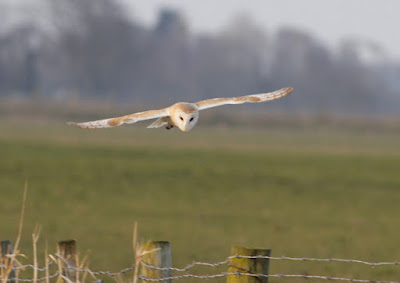These starts are getting earlier now that spring is here. Today was a 0530 wake-up for a meet up at Oakenclough with Andy at O630. We were joined today by Bryan who was also hoping our run of luck would continue by catching more Siskins and Lesser Redpolls.
As it turned out there wasn’t much time to relax and by midday we were more than pleased with our total catch of 38 birds which included a good number of the aforementioned two species: 11 Lesser Redpoll, 10 Siskin, 7 Goldfinch, 3 Long-tailed Tit, 2 Robin, 2 Blue Tit, 2 Coal Tit and 1 Great-spotted Woodpecker.
Ringer's lounge
Of the eleven Lesser Redpolls two, a male and a female, Z312630 and Z312632 were recaptures from 23 April 2015. The almost consecutive ring numbers could mean the two may have stayed together in the intervening period. It is also interesting that neither has been recaptured between April 2015 and today and may have been returning “home”.
Lesser Redpolls
Lesser Redpoll
Lesser Redpoll
For comparison, below are adult Siskins of each sex and don’t need labels to show which is which.
Siskin
Siskin
After a temporary blip last week Goldfinches returned in smlll numbers today.
Goldfinch
Great-spotted Woodpeckers are pretty common here but rarely come to our bird feeders, especially since we don’t employ peanuts but stick to Niger and mixed seed.
Great-spotted Woodpecker - second year male
Great-spotted Woodpecker
Birding between ringing produced migrants in the shape and sounds of Siskins and Lesser Redpolls overhead. Also 2, Grey Wagtails which fed briefly.
Otherwise, local birds included 4 Mistle Thrush, 2 Buzzard, 1 Kestrel, 1 Sparrowhawk and 4 Pied Wagtail. An unexpected sighting proved to be three Snipe which rose from a still boggy area of the plantation as we walked towards the nets.
Linking today to Stewart's World Bird Wednesday.
Linking today to Stewart's World Bird Wednesday.












































































